A Beginner’s Guide to Keeping Chickens
If you want to start keeping chickens, you need to read this comprehensive guide to beginner chicken keeping, only from Petful.
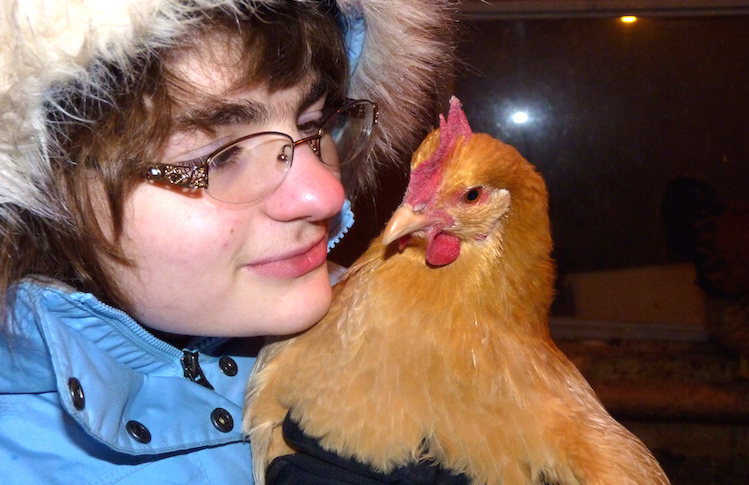

Don’t leave your pet’s safety to chance
Sign up for Petful recall alerts today.

A Beginner’s Guide to Keeping Chickens, Part 1: The Best Chicken Breeds
Are you thinking about sharing your backyard with a flock of chickens? You’re not alone.
Backyard chicken keeping is a pastime that continues to grow in popularity. And it’s no wonder — the so-called “urban hen movement” means you get oodles of farm-fresh eggs, happy chicken chatter, nutritionally rich garden compost and bug catchers on the job 24/7.
Below are 3 go-to breeds for those wishing to get their wings wet in the wonderful world of chicken keeping. They’re all heritage or “traditional” breeds and have been foraging this great land for centuries.
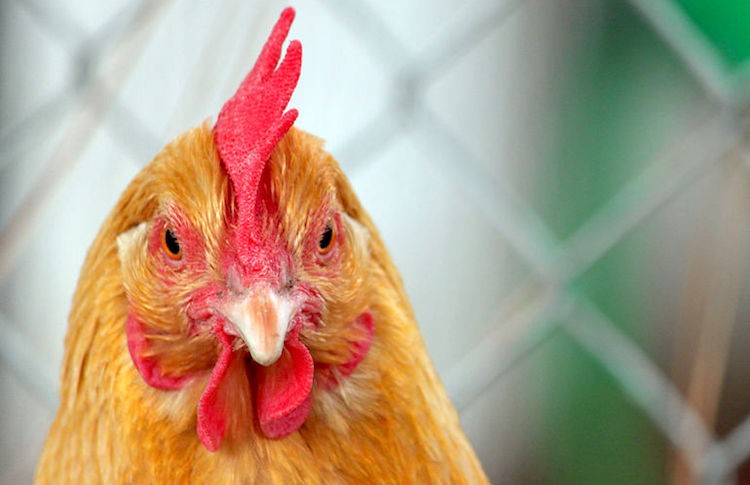
1. Buff Orpington
Buff Orpingtons are a beginning chicken keeper’s dream come true — they’re friendly, gentle and sociable. A quieter breed in general, these chickens will often blend into the background of your flock.
Don’t underestimate the Buff Orpington’s quiet gentle nature, though, because this breed will step up to the top of the pecking order and rule the roost — gently but effectively.
My Buff beauty, Bea, is the perfect example of a lady who knows how to rule with a gentle wing. She’s always on the job and focused on keeping her flock happy and safe. With her signature light-as-a-feather peck at the first sign of bullying, she keeps flock activity under control.
They love keeping a watchful eye on their flock. This quality is probably what makes them such exceptional Mother Hens. It’s also what makes them one of the most broody breeds. My Emily is a broody heavyweight champion — she goes through phases where she tries to camp out in her favorite nesting box. Unfortunately, it’s her siblings’ favorite nest box, too. With a little redirecting on my part, though, all is well once again.
Boasting a good egg production of about 250 eggs per year on average, an excellent tolerance to cold weather and an adaptable comfort level, whether confined to a coop and run or free-ranging the day away, Buff Orpingtons make a great addition to any beginner flock.
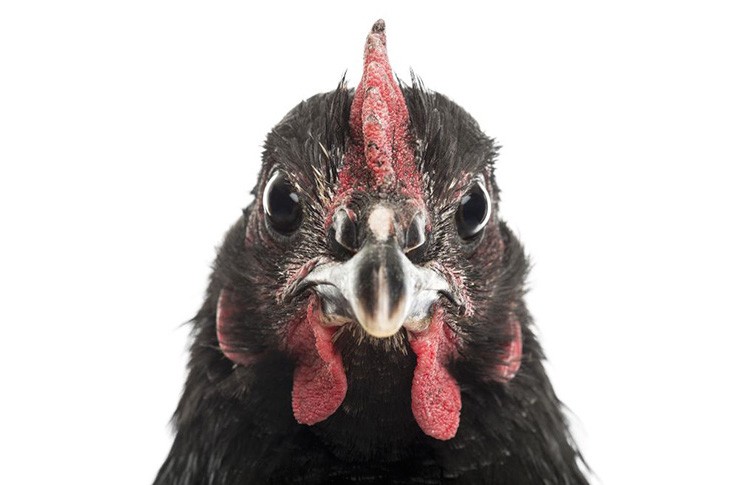
2. Black Australorp
Featuring a striking blend of deep black and flashy emerald-colored feathers with matching black beaks and smoky gray legs, family-friendly Black Australorps are fabulous. They’re also active, genial and charming.
According to Jeremy Hobson and Celia Lewis, co-authors of Keeping Chickens: The Essential Guide to Enjoying and Getting the Best from Chickens, “Australorps are easy to keep and become very tame, so they make good pets for children.”
Hailing from the Land Down Under, these feathery Aussies can be quite the characters.
Enter Abigail. Abby is a vocal gal and, as fate would have it, crows. As is typical in an all-girl flock, a hen may take on the role of a rooster by crowing. My other Australorp, Annie, is curious and busy. When Annie was barely out of her chick fluff, she actually pecked my pearl earring from my ear. I haven’t seen the earring since; nor did I search for it among, well, you know.
Although these black beauties may go broody, it’s infrequent. This breed is hardy, often continuing to lay large brown eggs through the winter, filling up your egg baskets with a whopping 250 eggs on average.
Even though we sometimes awaken with a crow and I have a lone pearl earring in my jewelry box, I adore my Australorps for their sweet, strong and curious nature.
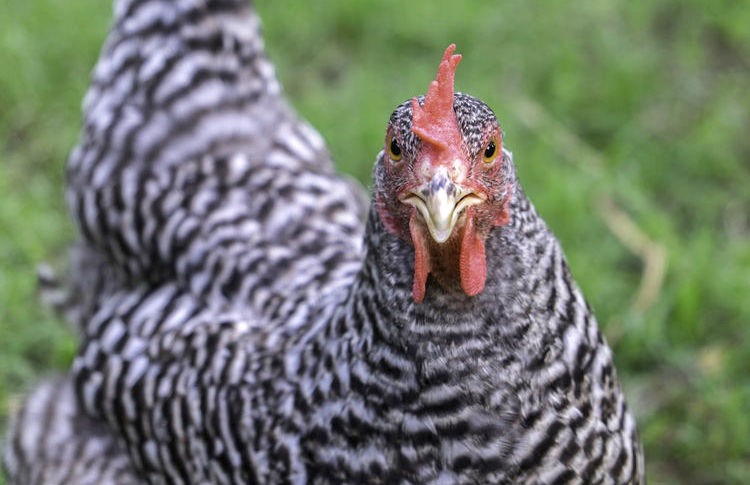
3. Barred Plymouth Rock
Among the most beloved chicken breeds, Barred Plymouth Rocks are known for their quiet, curious temperament and are avid, happy-go-clucky explorers.
Barred Rocks rarely stir up trouble. They’re the ultimate middle-of-the-road chicken and typically get along well with most feathery siblings. My Sadie and Sophie spend most days quietly cooing among my flock or wandering in search of the perfect dust-bath spot. I love this about them — they’re just easy.
This breed is extremely hardy against the cold, rarely broody and lays an average of 200 large brown eggs per year.
Barred Rock roosters make excellent flock mates. They will lead and protect, and are — for the most part — more calm and pleasant than the typical roo.
Honorable-Mention Breeds
- Rhode Island Red: Rhodys are known for their high egg production.
- Delaware: Adding one of these to your flock will greatly serve conservation efforts — this breed is listed as threatened on the Livestock Conservancy.
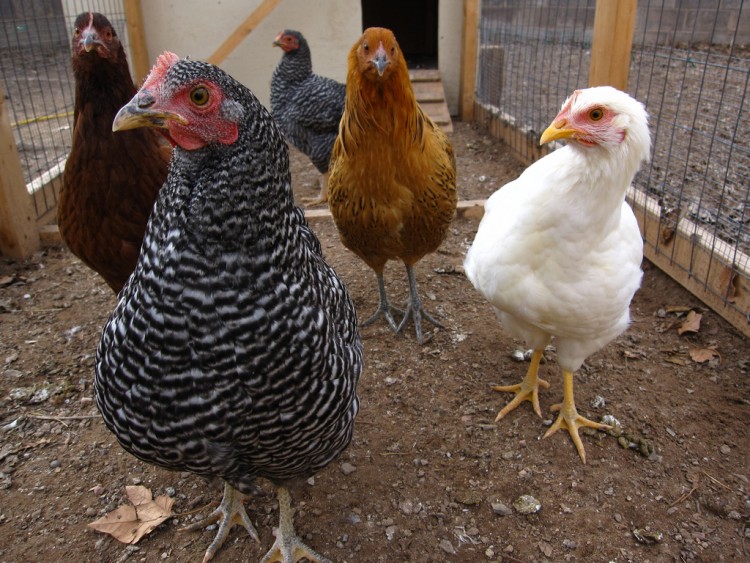
A Beginner’s Guide to Keeping Chickens, Part 2: Tips for a Healthy Flock
Chickens are amazing.
For the most part, they’re hardy and require little care and maintenance, a real plus for those who take care of them.
Even so, there are several things you can do to ensure that they’re healthy and happy. Flap along with me and discover how some simple tips can do wonders for keeping your flock in tip-top shape.
1. Get Out There Every Day and Watch Them
Daily observation is key. It gives you great insight into the overall health of your flock. You will:
- Develop a strong bond with the chickens
- Come to know their normal behavior and individual personalities and quirks
- Learn to recognize potential signs of illness
- More quickly catch any sibling rivalry
Healthy chickens are active, gregarious birds who thrive on interactions with their families. So, be on the lookout for any bird that is isolating herself.
Unfortunately, they can also hide any sign of disease until they’re so ill that they can’t mask it any longer. This behavior developed as a way to trick predators as well as siblings who may peck the weak among the flock.
If you have chickens, you’re bound to have a sibling rivalry. But, with the benefit of your daily observations, you’ll be well prepared to spot any bullying before it gets out of hand.
My Partridge Plymouth Rock, Phoebe, a quieter hen, spends her days happily cooing and wandering. She was at the bottom of the pecking order. However, after getting 6 new flock mates, Phoebe zipped up in rank and can be a bully at times. Thankfully, observation has kept me in the know, and my flock is healthier for it.
2. Establish a Simple, Regular Cleaning Routine
Chickens thrive in a clean environment. And disease-carrying bacteria and viruses do not.
Your backyard birds are especially susceptible to respiratory illness. Dust is the prime enemy. Unfortunately, it is also inevitable in a chicken coop because of these factors:
- Chickens are notorious scratchers.
- Bedding ages and breaks down.
- Feather dust and dander float around and settle.
In my flock, Lucy, named for comedian Lucille Ball, and Ivy, a.k.a. Ethel, steal the show with their comical antics. They also love to stand on feeder rims. Then their feed spills, gets trampled on and results in dust.
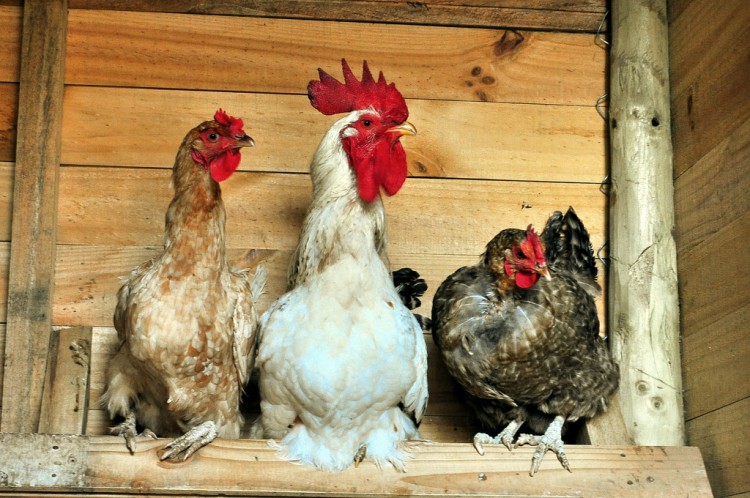
Therefore, establishing a simple, regular cleaning routine is a priority:
- Daily tasks: Scoop droppings; refill water and feed; gather eggs.
- Weekly tasks: Wash waterers and feeders and allow to air dry.
- Monthly tasks: Replace bedding if necessary.
- Biannual (spring and fall) tasks: Rake out all bedding; scrape off any stuck-on waste; sweep floor; scrub walls, floors and roosts; add clean bedding.
3. Supplement With These 2 Health Boosters
Even though chickens eat exactly what their bodies need, a little help can’t hurt.
- Apple cider vinegar: Add 1 tablespoon per gallon of water (to plastic waterers only) several times a week. ACV is said to boost immunity, prevent disease, discourage parasites from invading your flock, help keep their digestive system functioning well and keep water cleaner. According to Lisa Steele, author of Fresh Eggs Daily: Raising Happy Healthy Chickens…Naturally, “Studies have shown that the vinegar actually makes the water more palatable to hens.”
- Garlic: This powerful supplement also may boost a chicken’s immune system. Plus, it is said to eliminate worms, discourage external parasites such as mites and lice from taking up residence on otherwise healthy chicken skin and support the chicken’s fragile respiratory system. Crush 1 clove of garlic and drop it in the water or sprinkle garlic powder into the feed daily.
4. Provide 24/7 Access to Fresh, Clean Water
Water is vital to a chicken’s overall health. On average, a chicken will drink a half-pint of water per day. In warmer weather, that amount may increase to 1 pint. Laying hens especially require access to fresh, clean water at all times.
Chickens know what they like — and they do not like stale, warm water. In fact, they will turn their beaks away from it. Anything warmer than 90 degrees Fahrenheit will be ignored.
Without adequate water, your chickens may go into a premature molt or dehydrate.
These chicken keepers went the extra mile by installing a swing in the coop:

5. Let Them Out for Regular Free-Range Exercise
Chickens are naturally active. Those who lack stimulation and entertainment often become bored and act out by pecking siblings.
The good news: Regular free-range time can prevent misbehavior. Plus, you can’t beat the rich nutrition found in nature. So give your fine-feathered friends the chance to stretch their wings and thrive.
Next, as our comprehensive guide to chicken keeping continues, we look at various signs of illness in your flock.

A Beginner’s Guide to Keeping Chickens, Part 3: Signs of Illness
Chickens are generally hardy, healthy, busy little creatures.
They don’t really need much care and maintenance. However, they do get sick. And they’re sneaky about it — like cats, they mask their symptoms to protect themselves.
Knowing your chickens well and being able to recognize signs of illness are the best ways to prevent disease. Here are some common signs that your sick chicken needs a vet’s care.
1. Changes in Physical Appearance
Weekly comb-to-toe checkups will help you learn to recognize what’s normal. Watch out for:
- Combs and wattles: Dull, pale-red color with sores, scabs or swelling
- Head: Sores or scabs; facial swelling
- Eyes: Cloudy, watery or irritated; visible discharge
- Beak: Cracks or a twisted-shaped beak — upper and lower parts don’t match up at the tip
- Nose: Visible discharge
- Respiratory health: Breathing through an open beak
- Crop and abdomen: The crop is the prominent bulge in the middle of the chest (slightly to the right), and abnormal crops feel hard or mushy; gently feel your bird on both sides of the breastbone to check for thinness or excess weight
- Vent: Sore, irritated or bloody vent area; tissue sticking out from the vent
- Skin and feathers: Visible external parasites; sore, red irritated skin or scabs
- Wings, legs and feet: Droopy wing(s) or pain when wing is stretched out; inability to put weight on one leg or foot; sores, scabs or swelling on bottoms of feet or between toes; rough leg scales
All of these abnormalities warrant further examination. Seek the advice of your veterinarian.
2. Abnormal Behavior
In a healthy chicken flock, the cliché stands true: Birds of a feather flock together. Lone chickens are alone for a reason. Ask yourself these questions:
- Does the bird look sick or uncomfortable?
- Is she quieter and withdrawn?
- Is she hiding in a corner, or isolating herself from her flock mates?
- Does she appear to be unsteady, sluggish, sleepy or blinking?
- Is her head hanging down?
- Is her tail hanging down?
- Do her feathers look messy?

3. Changes in Activity Level
Busy chickens are happy chickens. So a change in activity level is a big red flag. Something isn’t right.
This happened recently with my Black Australorp, Abby. Typically vocal and busy, she started keeping to herself and lying beneath the hatch ramp or right in the middle of the doorway to the run, blocking access for her annoyed flock mates. She got around slowly and with difficulty. Instead of roosting, she slept on the floor.
My vet and I concluded that she’s suffering from arthritis. Yes, chickens can get arthritis, as can dogs and cats. This is bad news for an otherwise busy social bird. But Abby still has that spunk — she doesn’t miss a beat and responds with a little coo-like warble when I call her name.
4. Changes in Consistency and Color of Droppings
Chicken droppings may be the first sign of sickness. Birds can’t fake poop!
Because normal droppings vary greatly depending on temperature, diet, water intake and more, abnormal-looking droppings coupled with physical changes, behavioral changes or any of the other signs of illness will help with a diagnosis.
- Normal droppings: These are typically solid brownish-green with a white cap. They can be softer, watery because of increased water intake or tinted with color from excessive berries, grass, weeds or seasonal vegetables. Also, they can be cecal droppings (which may appear as reddish-brown, softer and smellier — but they are quite normal and can occur a few times a day).
- Abnormal droppings: Diarrhea or poop that is green or yellow-green, foamy or bloody. Worms — yes, worms — may be visible.
5. Drop in Egg Production
A healthy hen might lay fewer eggs. This happens for several reasons:
- She is molting.
- She is broody.
- She is 3 years old or older.
- She is responding to the decreased daylight hours and cooler temperatures during autumn and winter.
- She is stressed (for example, from overcrowding, flock or coop changes, inadequate ventilation, poor nutrition, extreme heat, inadequate water supply and distractions such as nearby construction work).
If these reasons don’t apply to your hen’s decline in egg laying, then she’s most likely sick, and the only thing to do is notify your vet.
But remember, chickens are hardy — and still the best pets ever, in my opinion. Just consult your veterinarian if you’re concerned about your flock.
Next, we’ll discuss great supplements for healthy chickens.

A Beginner’s Guide to Keeping Chickens, Part 4: Supplements
Chicken feed is created with a healthy flock in mind.
It contains all the necessary nutrients for chickens to live a long, healthy life based on their stage of development.
Even though this is true, supplementing their feed is a good idea. The basic philosophy behind supplementation is that you are giving your birds the best possible foundation to fight off disease.
8 Great Supplements for Healthy Chickens, No Matter the Season
There are many supplements you can add to your chickens’ diet all year long. Supplementing your chickens’ feed is basically a matter of personal preference and your birds’ individual needs.
Although some supplements are season-specific or simply more plentiful at certain times of the year, feel free to supplement the following regularly:
1. Grit
All chickens need grit to grind up food because they have no teeth.
2. Probiotics
Any time is a good time to add probiotics. The word probiotic means “for life.” Simply put, probiotics are beneficial bacteria that work to boost immunity, improve digestion and appetite, and help feed conversion.
Probiotics come in powder or liquid forms. Or offer your chickens sourdough bread, kefir milk or yogurt.
One word of caution, though: A little dairy goes a long way. A chicken’s body is only able to digest small amounts of lactose, a milk sugar.
3. Food-Grade Diatomaceous Earth
Diatomaceous earth (DE) is a combination of silica, sodium, magnesium, iron and a mixture of other trace minerals. Add 1½ cups of DE per bag of feed for optimal health benefits:
- Improves the quality of eggs — they are bigger and stronger shelled
- Stimulates metabolism
- Boosts appetite and weight gain
- Helps rid birds of nasty worms and internal parasites
- Helps heal scratches, cuts and wounds
- Lessens pain and inflammation in aging birds
4. Dried Herbs
Nettles, parsley, sage and spearmint.
5. Flower Petals
Rose, violet, marigold, pansy and sunflower petals.
6. Leftovers
Scrambled eggs, oatmeal, pasta, rice, greens, berries and breads.
7. Garlic and Apple Cider Vinegar
As we’ve previously discussed, these are natural health boosters for chickens.
8. Calcium for Laying Hens
Crushed oyster or egg shells.
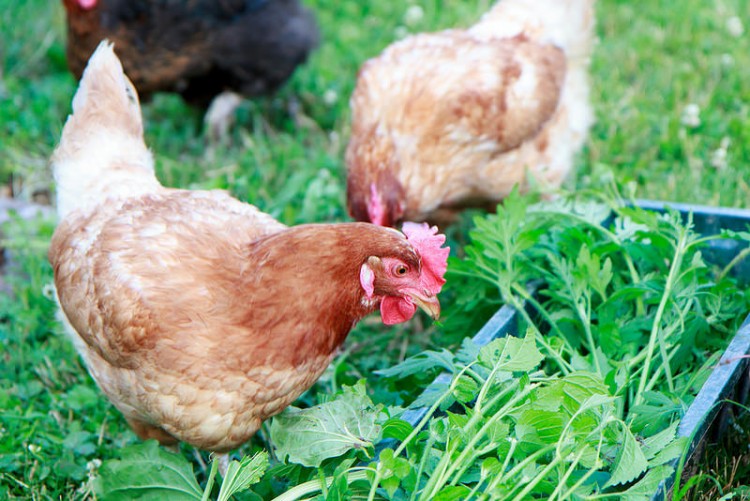
Summer
Fresh Produce
Summer equals fresh garden goodies. Your garden plants should, by now, be hardy and tall enough to withstand even the most persistent chicken beaks.
Nothing beats fresh produce — vegetables are packed with nutrients they take in from the soil. Chickens especially enjoy tomatoes, bell peppers, cabbage, greens, corn and berries. Toss your flock some cherry tomatoes on a nice summer day, and let the games begin. My gals love a rousing flap-happy game of mini-tomato soccer.
Dandelions and Weeds
Do you dread dandelion season? Well, fear not, because all parts of the dandelion are superhero supplements. Overflowing with calcium and many other essential vitamins, minerals and antioxidants, dandelions also help with digestion.
Dandelions and weeds in general can be your best ally against disease. They’re plentiful. They’re accessible. And they’re full of immunity-boosting nutrients.
Autumn
Protein-Rich Foods
Autumn’s cooler temperatures and fewer daylight hours cause chickens to molt. Molting can cause minimal to extensive feather loss. Feathers consist of about 85 percent protein, so extreme molts can spell trouble.
Most chickens won’t be phased in the least by their feather loss, but some will need a boost of protein to aid in regrowth.
Some excellent sources are:
- Dry cat food
- Oatmeal
- Scrambled eggs
- Black oil sunflower seeds
- Meal worms
Winter
Winter can be tough on chickens. Even though you may live in a temperate region, you’re likely to experience colder temperatures now and then. So be prepared.
Homemade Scratch
Scratch is a mixture of corn and grains. Make it a little more tasty and interesting by adding dried berries, raisins, oats, sunflower seeds and flaxseed. Your chickens will peck it like crazy.
Check out this handy grazing frame that helps chickens get the nutritious greens they need:

Give scratch only as a supplement and not as a replacement for regular feed because, depending upon the ingredients you use, it has little protein and lots of carbohydrates.
It is a great winter treat, though, because as your chickens’ bodies work to digest the corn and grains, they’re actually creating body heat.
Sprouts
Want to offer your flock the jampacked nutrition of fresh seeds and grains all winter? Sprouts to the rescue.
Lisa Steele, from the Fresh Eggs Daily Blog, says, “Sprouted seeds and grains are actually more nutritious than either feeding them whole or grinding them into feed.”
You can easily sprout your own delicious seeds for chicken peckin’ pleasure — try sprouting clover, alfalfa, lentils, oats, mung beans and peas.
Healthier and Happier
The key to a healthy chicken flock is proper nutrition.
Incorporating the supplements above into your flock’s diet should improve their overall health, making them not only healthier but also happier.
We’re getting close to the end of our comprehensive guide to chicken keeping for beginners! Next, in Part 5 — our final section of this guide — we discuss various ways you can interact with your flock.
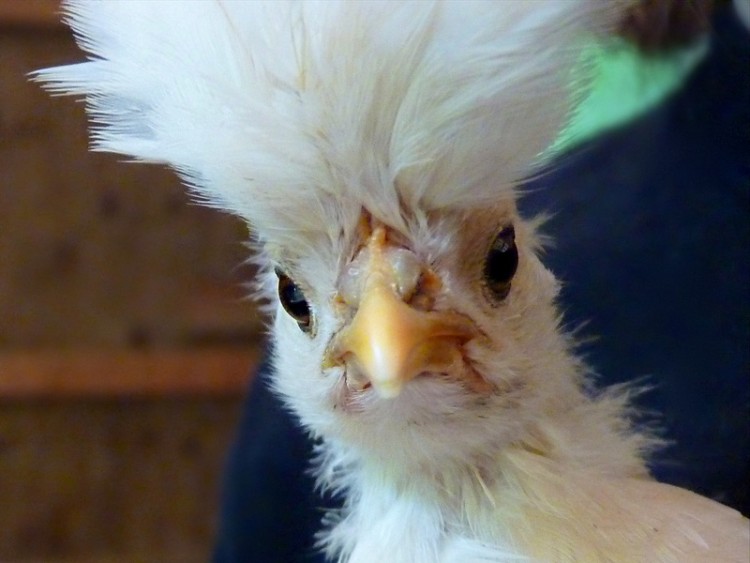
A Beginner’s Guide to Keeping Chickens, Part 5: How to Interact With Your Flock
Chickens are lively, playful creatures. They are happiest in a group and usually bond easily with their human families.
Interacting with your chickens is fun. Quality time together also provides other important and practical benefits.
Regular interactions:
- Help keep your chickens active and alert
- Help you keep an eye on their overall health
- Help develop a sense of trust between you and your flock — trusting birds are more easily handled during checkups and more likely to enjoy being petted
Developing a relationship with your flock can be tricky. Chickens are prey animals and thus innately distrusting. They are cautious yet highly curious. This curiosity can work in your favor, though, plus the fact that the way to a chicken’s heart is through its beak can work wonders.
Encourage your birds with chicken-friendly treats such as raisins, oats, leftover pasta, grapes and berries. Time, patience and consistency are key.
So, let’s take a peck at some easy ways to spend some quality clucky time together.
1. Chat With Your Chickens
Chickens are chatty. So, one of the most obvious ways to interact with your flock is to chat with them. Shy birds, in particular, may even cluck along.
- I like to mimic their many unique clucks, coos, warbles and crows. Some will answer me — Abby always responds. Others stare. Still others simply go about their business.
- Chickens can learn to recognize their names. Greet your birds by name when you visit, and engage them by using their names regularly. It’s a great way to establish a bond, stimulate their brains and encourage them to come to you when you call.
I especially like to watch my hens’ varied reactions. Felicity, my speckled Sussex, typically pauses whatever she’s doing and clucks. My Buff Orpington, Emily, replies with a warble every time.
2. Pet Your Chickens
Encourage your chickens to come to you, comfortably accept gentle touches and even sit in your lap.
Just like cats and dogs, chickens respond well to petting. Silkie chickens in particular are extremely tame and have remarkably soft, “silky” feathers.
Chickens also have a secret sweet spot: Gently rubbing your birds on the back of their necks underneath all their feathery fluff seems to calm them.

3. Experiment With Music and Sounds
Chickens have a keen sense of hearing. In fact, they not only respond to a variety of sounds, but also they actually enjoy listening to pleasant-sounding music.
Are you a classical music aficionado? Share your love for fine music with your flock.
In her article from Backyard Poultry, Lisa Steele poses the question, “Does Playing Classical Music Benefit Your Chickens?” She reports that her chickens “are more calm, friendlier, never peck at each other and live more stress-free lives because of the music.”
Experiment with sounds and watch your chickens’ responses:
- Whistling, humming and singing will definitely catch their attention.
- If you play a portable instrument, such as the guitar or flute, serenade your chickens.
Healthier, happier chickens are just a melody away.
Watch these chickens enjoy the beautiful strains of live guitar:

4. Play With Your Chickens
Playdates will help keep your flock healthy. Chickens need stimulation — otherwise, they may become bored. Bored chickens are unhappy chickens, and unhappy chickens can become stressed or pass the time by pecking their siblings.
Here are some ideas that I use to play with my flock:
- Scatter oats or chicken-friendly treats on the ground. Feel free to move around while tossing treats.
- Play hide-and-seek: Quickly hide while your birds are busy foraging. Then cluck to them.
- Add a treat dispenser to your chicken run — your birds will go crazy! Several types are available online.
- Set up a nontoxic children’s play tunnel in your backyard or try a DIY version: Cut out the bottoms of cardboard boxes and connect them. Encourage the birds to “crawl” through by tossing in treats.
- Dig a hole and fill it up again so the dirt is piled loosely on top. Hide a piece of red fruit (cored apples only; no seeds) or a red bell pepper inside. Chickens are fascinated by the color red.
- Teach your birds to do tricks. Yes, chickens can learn to do simple tricks. Encourage your friendliest bird to hop up onto your arm when prompted with a treat. You can also train your birds to peck at a colored shape, follow an agility course and more using the same type of clickers as dog trainers.
Interacting with your chickens helps keep them active, happy and healthy. Spending quality time with your flock is also a great stress reliever for you.
Did you enjoy this comprehensive guide to chicken keeping for beginners? Please leave me a comment below!
References
- Damerow, Gail. The Chicken Health Handbook. North Adams: Storey Publishing, 1994.
- Gauthier, Julie, DVM, MPH, Dipl. ACVPM, and Rob Ludlow. Chicken Health for Dummies. Hoboken: John Wiley & Sons, Inc., 2013.
- Steele, L. (2013). Fresh eggs daily: raising happy, healthy chickens…naturally. Pittsburgh, PA: St. Lynn’s Press.








